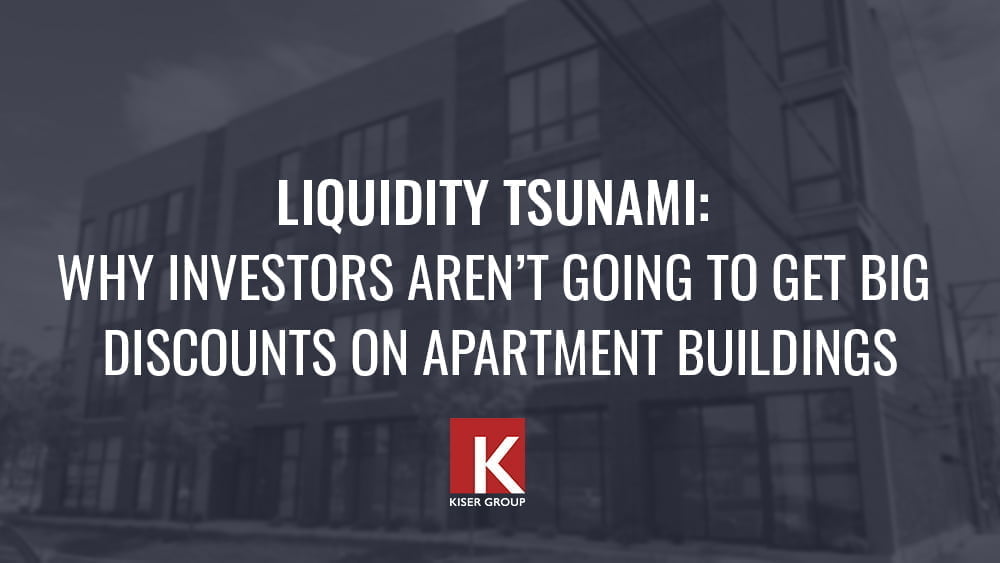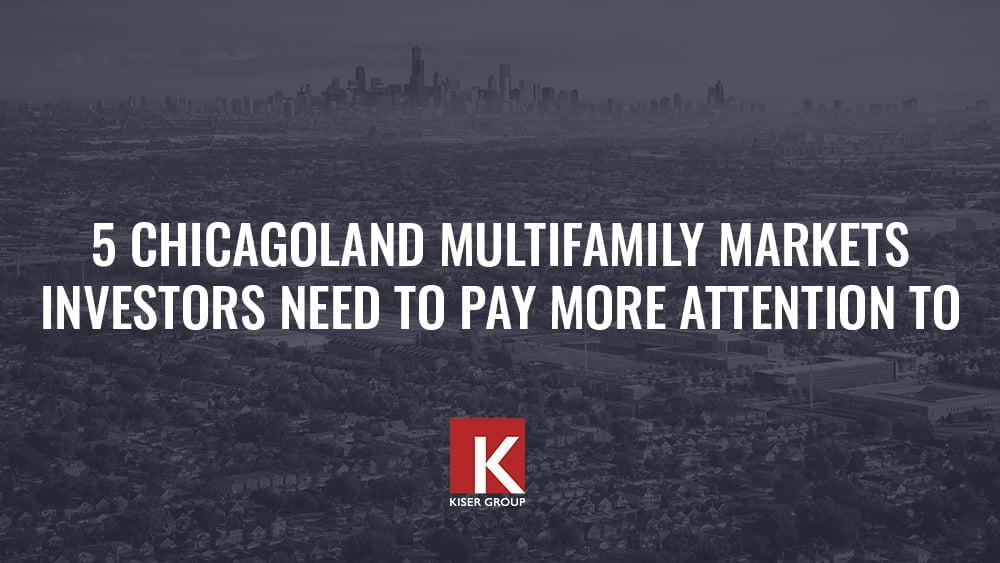07.13.20
Liquidity Tsunami: Why investors aren’t going to get big discounts on apartment buildings

Four or so months into Covid-19, the commercial real estate world is still trying to make sense of what to expect in the coming months and years. In multifamily, landlords have many concerns ranging from tenants’ ability to pay rent to leasing vacant units to financing.
These concerns are repeated like a mantra by buyers, hoping to get the chance to pick up apartment buildings at a discount. What few people mention is the factor that outweighs everything- liquidity.
The United States government recently injected $6 trillion of stimulus into the system via the CARES act and Federal Reserve balance sheet expansion, an amount equal to 30% of our annual GDP. This dwarfs the stimulus created in the wake of the 2008 financial crisis- $831 billion of stimulus in the American Recovery and Reinvestment Act plus roughly $500 billion spent (and recovered) through TALF and TARP. To top it off, the Federal Reserve has once again taken short-term interest rates to zero, effectively penalizing idle money.
At the beginning of May, private equity real estate funds were sitting on close to $350 billion of dry powder, implying $1 trillion of purchasing power. Since the onset of Covid-19, US banks have taken in $2 trillion in new deposits. With a capital requirement of 10%, that’s theoretically $20 trillion available to be lent out.
Family offices, REITS, and pension funds all have huge sums of money to put to work as well. The average annual commercial real estate dollar volume in the United States for the last five years- $472 billion.
Lending in multifamily, while certainly more restrictive and difficult to obtain, is far from dead, especially on a re-fi. Lending will be back in full force, for the reasons above, and interest rates and terms will become more and more favorable as lenders compete for business. Agency debt is still cheap, and I’ve seen clients do HUD refinances at 2.5% to 3%. Cheap loans not only enable higher purchase prices, but they also remove supply via owners opting to refinance instead of selling.
From my personal experience, March and April were filled with conversations from buyers who wanted me to know they had plenty of available cash but were only looking for discounts – with certainty they would become available. I also fielded many calls from office and retail investors looking to transition into multifamily. Of the three properties I have brought out since March, two are northside condo deconversions that have been listed on and off for years. Those two deals are now headed for votes on contracts at prices higher than they were ever offered pre-Covid, and with fully capable buyers.
Those buyers are getting great properties under contract while others wait for the “deals.”
So here is the coming chain of events as I see it:
- Liquidity continues to build as cash is hoarded and as the government continues to create money out of thin air to mitigate economic damage
- Zero percent return on cash gets old quickly, especially for those that have investor returns to pay (private equity) or return targets to hit (pension funds)
- Investors coming back into the market focus on multifamily as a safe haven with yield
- Investment demand plus dropping loan rates result in cap rate compression
- I spend the next few years listening to investors who cannot believe the “crazy” prices that people are paying for apartment buildings.
Could rent growth slow or decline for the next few months or even years- yes. Could delinquency/non-payment increase in that timeframe- yes. Is there a law that says this, therefore, dictates lower pricing on apartment buildings- no. Supply and demand dictate market pricing, and liquidity dictates demand.
It’s not the time to be on the sidelines.
